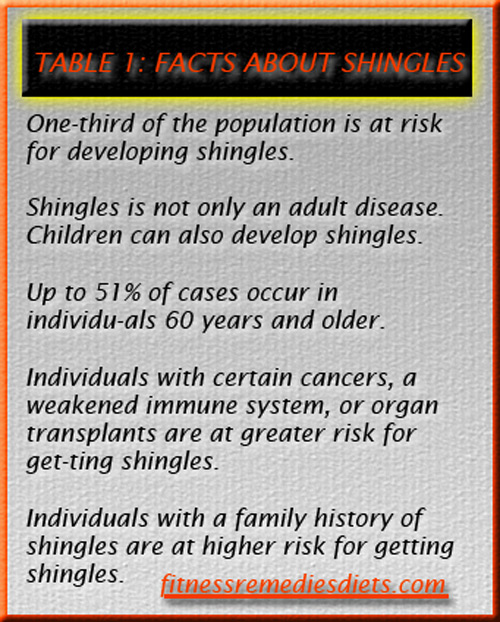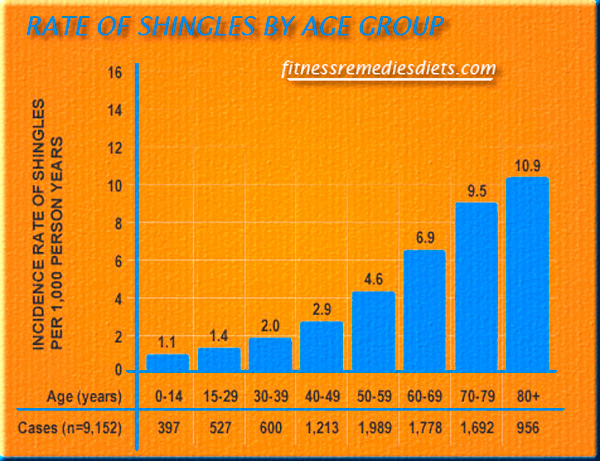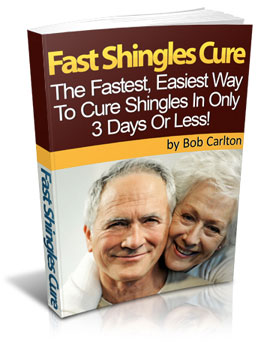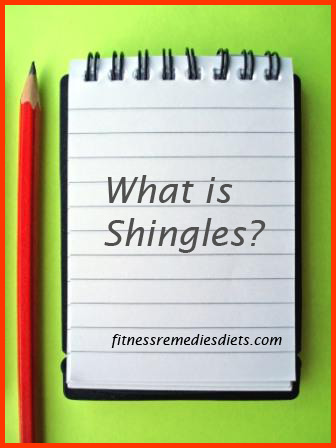 What is Shingles
What is Shingles
Shingles is a condition that causes painful skin rash. It is also called herpes zoster. The virus that causes shingles only affects one nerve but the adjacent nerves can also be affected. The most affected areas of your body are abdomen and chest. Other parts include the face, eyes or any body part.
Having shingles can be a very difficult moment for you to deal with. It can cause a lot of pain and discomfort for you to have a pleasant time. Let us learn what shingles is all about and how you can make that experience with shingles a bit easier.
What Causes Shingles
The virus that causes shingles is the same one that causes chickenpox. It is called the Varicella-Zoster Virus (VZV). Those who have memories of chickenpox know that it is far from pleasant. The chickenpox virus remains dormant in your nerve roots. It particularly stays lodged in the nerve roots next to your spinal cord. It can forever be dormant or the virus could just ‘flare up’ though it cannot cause chickenpox.
This happens when certain factors weaken the immune system in your body which is responsible for keeping the virus in its inactive state. They may include particular medicines, old age or stress. The immune system also prevents the chickenpox virus from multiplying.
Shingles Early Symptoms
– Fever.
– Aching muscles.
– Headache.
– Fatigue.
– Nausea.
– Feeling generally unwell.
– Itchiness on the affected spot.
– Sensitivity to light.
– Burning.
– Numbness.
– Chills.
– Localized pain in the lower abdomen – this pain can be intense or mild and may even cause hypersensitivity.
Facts about shingles
Some Shingles Facts
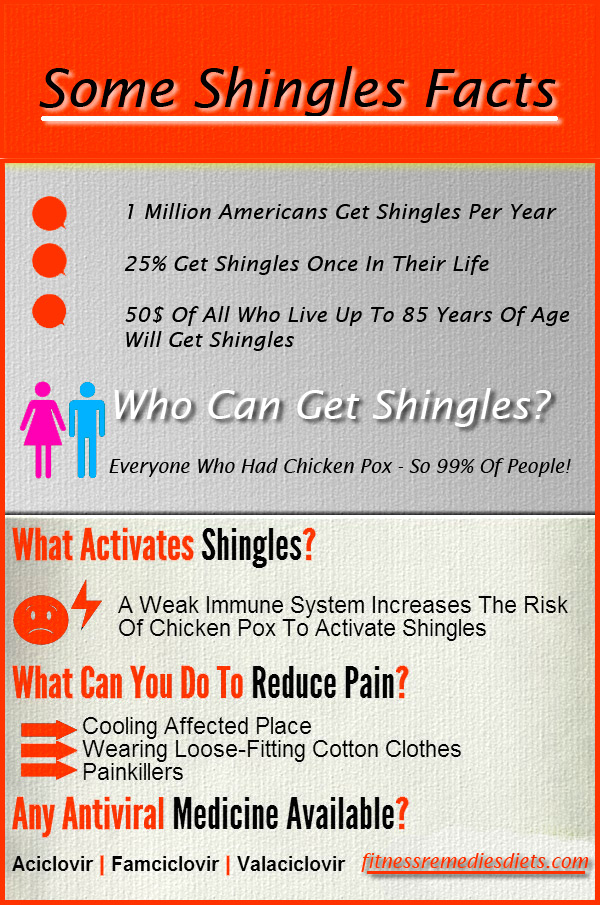 Rate of shingles by age group
Rate of shingles by age group
Rash (appears 2-3 days after the pain starts)- it appears on one side of your body. In the initial stages they look like red blotches but gradually become blisters that are very itchy. If you notice any symptoms of shingles, it is advisable to see your doctor for early treatment.
Can Shingles Spread From One Person to the Another?
Someone who has shingles cannot ‘infect’ another. However, someone who has never had chickenpox and hasn’t gotten the chickenpox vaccine has a chance of getting the virus from someone who has shingles but it is very unlikely. Shingles is triggered when the virus that causes chickenpox ‘flares up’ again in your body.
Shingles Early Treatment
Read more about how to treat shingles
The kind of medication for shingles early treatment may include:
Painkillers can relieve pain if it is not that severe: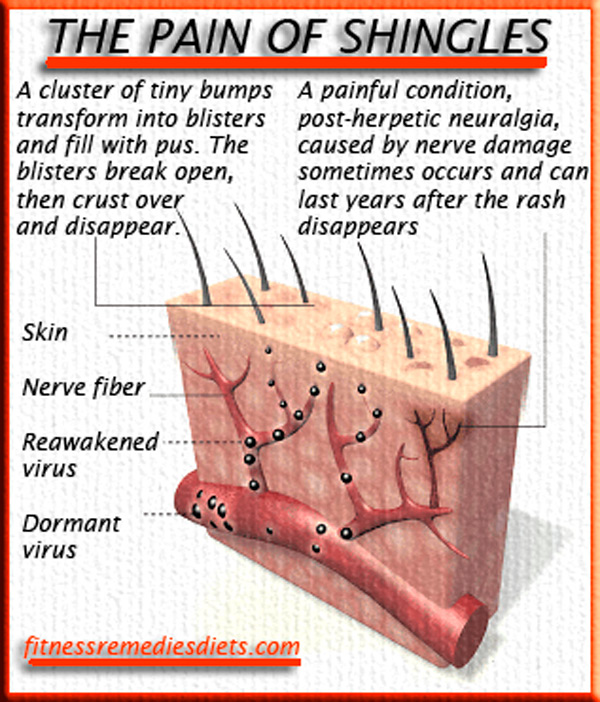
– Benzoin.
– Antidepressants.
– Antiviral drugs like acyclovir (Zovirax).
– Over the counter medication like aspirin, acetaminophen or ibuprofen.
– Shingles Home Remedies.
Do not scratch or prick your blisters. Ensure that your blisters are sufficiently aerated. You can use Burow’s solution to soak crusted sores. It decreases oozing and calms the skin. If the rash is too painful for you to get adequate sleep, wrap the rash in a sports bandage.
You can see the images of shingles here
Applying cornstarch or baking soda can help dry your sores. You can ice the shingles for several minutes across the day. Using the prescribed medicine appropriately.
Shingles is more common in people who have had their 50th birthday. If you take immunosuppressive drugs, you run a higher risk of getting shingles. Other conditions that increase your chances of getting shingles include leukemia, lymphoma, cancer or the Human Immunodeficiency Virus (HIV).
Download ‘Fast Shingles Cure’ e-book
You can download ‘Fast Shingles Cure‘ e-book and learn many useful and detailed information about natural shingles home treatment (click on download button).


